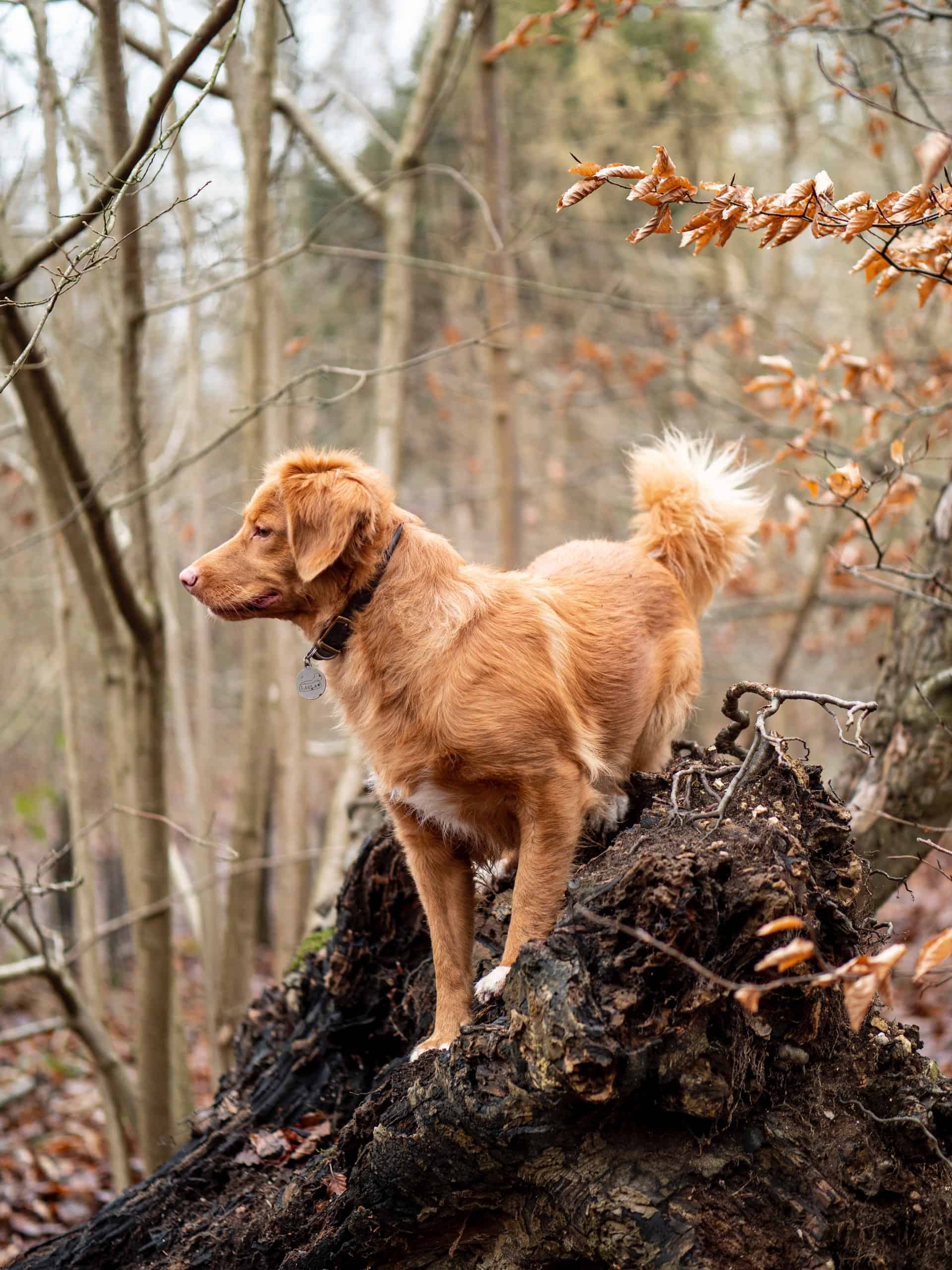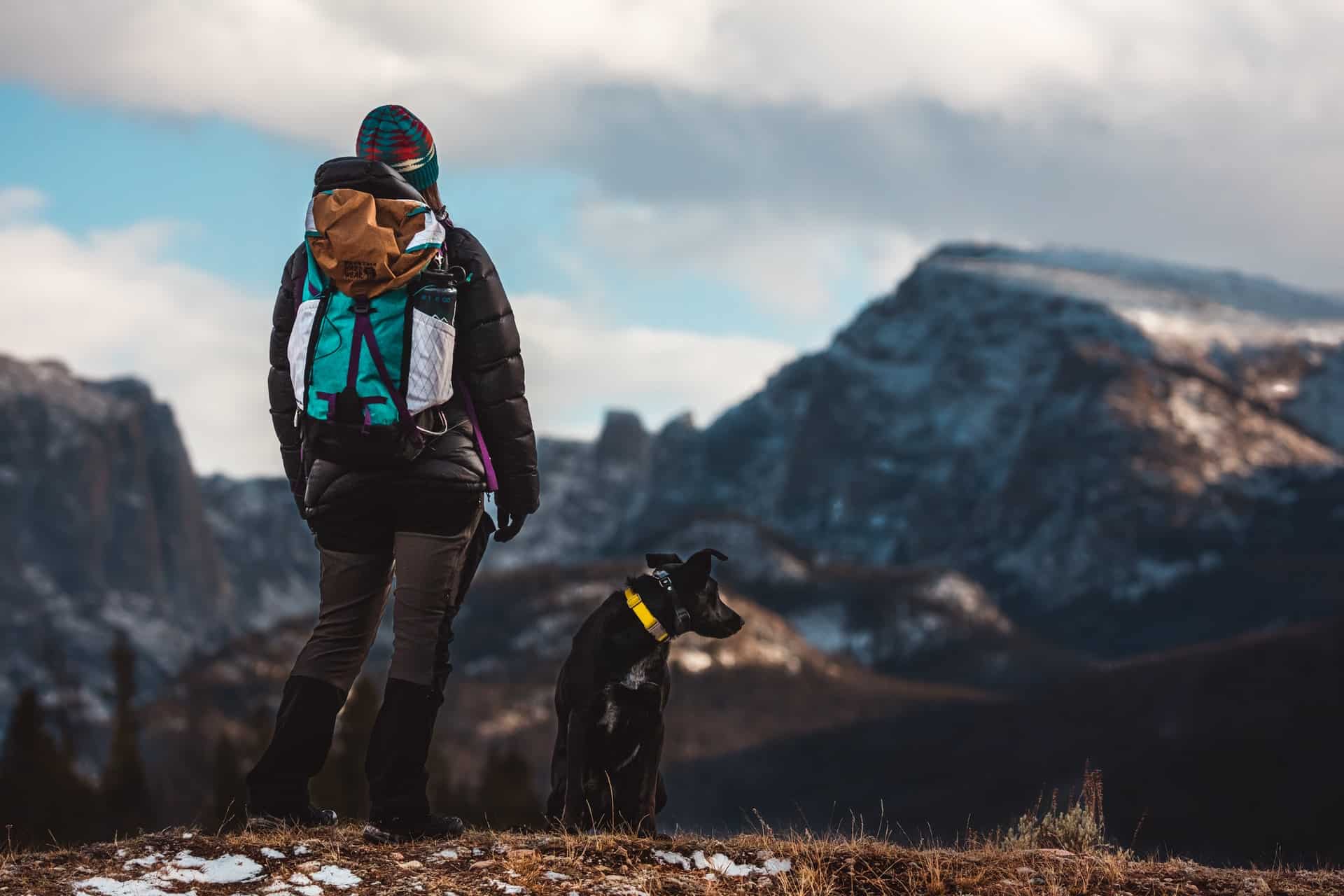Dog owners who are passionate about hiking, backpacking, and other outdoor adventures need a safe and convenient food option to bring along for their best friend.
You may spend a lot of time looking for different types of food to bring for yourself, but what about your dog?
In this article, we will cover the best backpacking dog food that will keep your friend energized and ready to take on any adventure with you!
Disclosure: Links to products might be affiliate links so we earn a small commission at no extra cost to you.
What Ingredients You Should Look For In Dog Food?
It’s important to always read the labels on dog food before making your purchase. Avoid foods made with mostly plant-based protein as dogs are primarily carnivores and that won’t provide the nutrition they need.
Look for foods where animal proteins are among the top ingredients. When you’re doing an activity like backpacking with your dog you’ll want to make sure that their food has a higher concentration of fats and proteins to keep their energy levels up.
Healthy dog food should consist of approximately 18-25% protein, 10-15% fat, and 30-50% carbs. You can always ask your vet for recommendations before making your trip if your dog has special dietary needs.
Types of Dog Food
Dog food comes in many varieties, but these 5 are best for backpacking. There are some pros and cons to each so it’s important to do your research and choose carefully before embarking on your adventure with your best friend.
- Freeze-Dried Dog Food
Freeze-dried dog food retains almost all of its nutritional value because the process it goes through doesn’t involve any heat. A pressurized vacuum chamber is used to remove moisture from frozen, raw foods. This process prevents any bacteria or pathogens from being present in the food.
There are several benefits to bringing along freeze-dried dog food. It’s typically lightweight, compact, and one of the healthiest options. It will also help keep your dog hydrated because you’ll need to introduce water to rehydrate the food.
The downside to freeze-dried dog food is the preparation involved. It can take a little while to heat the water needed to rehydrate their food. This can be challenging during a backpacking trip or at the end of a long day.
Freeze-dried options may not always be available in your local stores but any shop focused on camping should have some in stock.
- Dehydrated Food
Dehydrated dog food is similar to freeze-dried but the process involved is very different. Food that is dehydrated has had all the moisture removed through a slow heating process. A low heat setting is used to ensure all the natural enzymes and nutrients remain in the food.
A lot of backpackers choose dehydrated foods for their dogs because it’s lightweight and nutritious item that has a long shelf life. Some dehydrated foods can last up to 5 years or more. It’s a great option if you want to buy in bulk and not have to worry about it again for your next several trips.
Much like freeze-dried dog food, dehydrated food does take some time to prepare. It can similarly be harder to find but, of course, specialty camping stores and online retailers should always have some in stock.
- Canned Food
With canned dog food, you can be assured of its availability almost everywhere you go. Canned dog food typically contains a higher water content than other foods which can make it an excellent option for your high activity outdoor adventures.
Many dogs prefer the smell and taste of canned food over other options which makes it a great way to entice your dog to eat after a long day of hiking. Canned food is the most convenient option in terms of preparation. All you have to do is open the can, put it in a bowl, and give it to your hungry friend.
This isn’t going to be your most lightweight option and you won’t be able to save any food your dog doesn’t eat after the can has been opened. Canned dog food needs to be refrigerated once it’s been opened so be sure to throw out any remaining food when your dog is finished.
- Energy bars/treats
Energy bars and treats for dogs are a compact and convenient way to feed your dog on any backpacking trip. These bars are specifically designed as a meal replacement and high-calorie option for dogs involved in intense activities.
Finding the ideal energy bar for your dog follows the same requirements for their other foods. You’ll need to find one that meets your dogs’ nutritional needs based on their weight, overall health, activity level, and any dietary needs. It’s always best to consult your vet if you’re unsure about trying a new type of food with your pet.
Energy bars for dogs can be found in specialty stores as well as online. You want to do your research and compare several different brands to find the best nutritional value and price. You may want to consider introducing energy bars to your dog before your trip. This way they’ll get used to the next textures and flavors and will look forward to it.
- Dry Food
The most common form of dog food is dry food. Many people prefer this option in their everyday lives. It’s nutritious, affordable, and convenient to buy. But what about when you’re bringing your dog backpacking with you?

The benefit of bringing along dry food is you won’t have to worry about introducing your dog to new food and watching out for any adverse reactions. Bringing along the same food they eat at home could provide comfort to your dog and ensure that they’ll get the nutrition they need.
Dry food is going to be heavier to carry than most of the alternatives on this list. It’s also, obviously, very dry so it’s important to give your dog extra water when they eat to ensure they’re getting properly hydrated.
How Much Doog Food to Bring
Backpacking can be an intense physical activity so it’s important to establish how much food your dog is going to need before you buy anything. This will depend on your dog’s breed, weight, current health, and usual activity levels.
Start by determining the base amount of calories your dog needs in a day. For a dog who is 10lbs, healthy, and has a moderate activity level on a daily basis he should be consuming about 350 calories a day.

Here’s a great reference for how many calories a day your dog requires to stay healthy and active. You’ll want to increase their calories when doing anything that causes extra physical exertion. An extra serving a day should be plenty to keep your dog’s energy levels up. If you’re unsure of exactly how many calories to provide your dog make sure to check with your vet.
Packing & Preparing For Your Trip
Backpacking can be an amazing and fun adventure, but the preparation can be a hassle. Getting everything you need into your backpack for yourself takes skill and when you add extra items for your dog it can turn your perfectly organized pack into chaos.
To avoid any headaches it’s best to keep all of your pet's items together. There are even packs designed for your dog if you think he can handle carrying his own supplies.
Regardless of who’s carrying it, you’ll want to make sure that all of your dog's items are stored in waterproof bags or containers inside your pack. Some basics you’ll want to include along with their food items are a leash, insulated or cooling jacket depending on the weather, a first aid kit, and a protective liner for the floor of your tent.
Being properly prepared is key to ensuring a safe, fun, and exciting trip. Double-check that you have everything you need before heading out and you can then enjoy the great outdoors with your best friend.
For more guides read my other posts:
About the Author

Hussain is a passionate hiker and traveler that love the outdoor and enjoys what nature has to give, whenever he can he love to write and give tips & honest reviews to help others get out there and just seek more unforgettable experiences.
